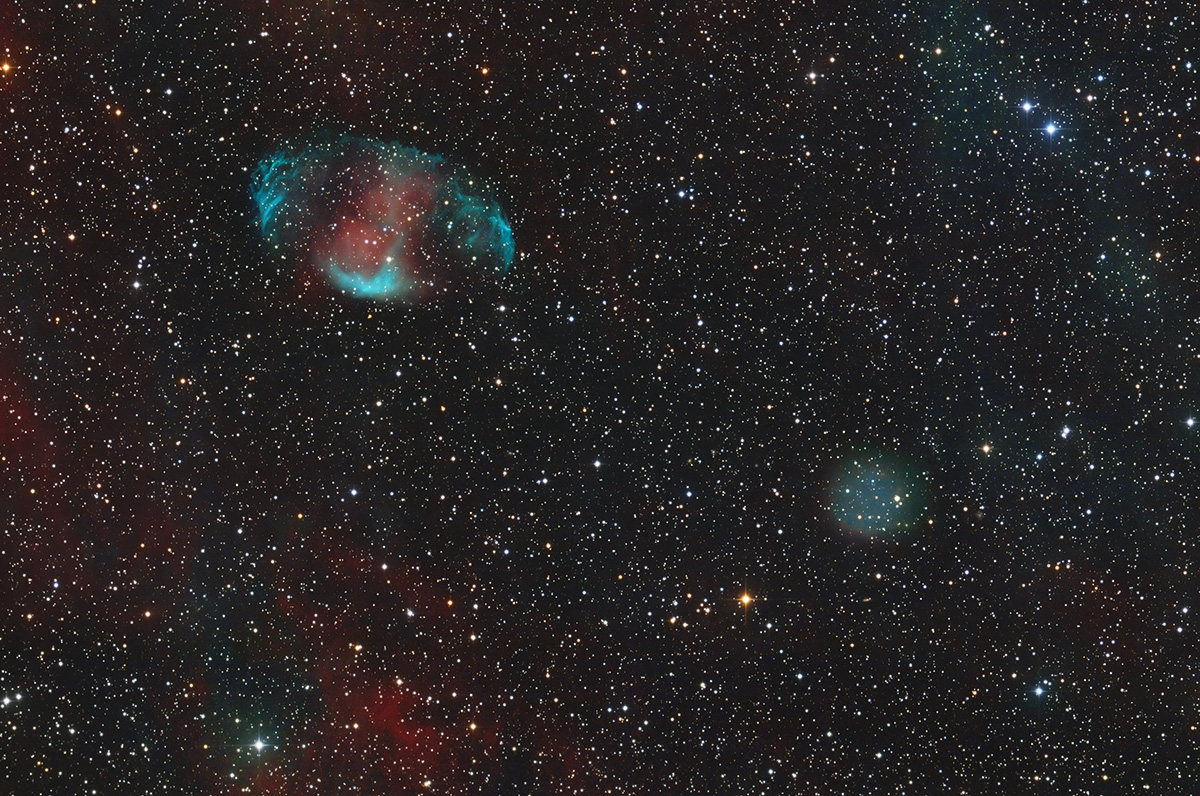
[back] MWP 1 and ALV 1 (PK 80-10.1 and PN G079.8-10.2) in Cygnus
Higher resolved image / Höher aufgelöstes Bild (4000 x 2654)

|
(c) 2021 All astro photo images are copyrighted. They may not be used or reproduced without explicit written permission from the authors. |
|
5' |
|
About this Image / Über dieses Bild
| CCD: | ZWO ASI094MC Pro |
| Image Type, Orientation: | RGB-HaOIII Composite, North is at 12:00h |
| Exposure time: | RGB: 12x300s, Ha/OIII: 84x300s (8h total) |
| Exposure date: | September 3rd and 4th 2021 |
| Location: | Capella Observatory at Eifel, Germany, remote-controlled from Bad Arolsen/Germany |
| Filter: | RGB: Internal Bayer-Matrix, HA/OIII: STC Astro Duo-Narrowband Filter |
| Instrument: | Ganymed 60cm-Hypergraph in primary focus (f=1815.9 mm) |
|
Image seeing (FWHM): |
2.0" |
| Photographer: | Josef Pöpsel, Stefan Binnewies, Frank Sackenheim |
| Remarks: |
MWP1 (the larger of the two PNs) is named after C. Motch, K. Werner and M.
Pakull. His discovery was made known in 1992 in a publication on the
examination of X-ray sources discovered by ROSAT (see
here). MWP1 is one of the largest, oldest and its central star one of
the hottest known. Nevertheless, its surface luminosity is low due to its
(not only apparent) expansion and the reason for its late discovery. ALV 1 (the smaller one) was discovered in November 2009 by Filipe Alves, a Portuguese amateur astronomer (see here). It is once again significantly weaker than MWP 1. |
|
Bemerkungen: |
MWP1 (der größerer der beiden PNs), ist nach C. Motch, K. Werner und
M. Pakull benannt. Seine Entdeckung wurde 1992 in einer Veröffemtlichung
über die Untersuchung von Röntgenquellen, die von ROSAT entdeckt wurden,
bekannt (siehe
hier). MWP1 ist einer der größten, ältesten und sein Zentralstern einer
der heißesten bekannten. Trotzdem ist seine Flächenleuchtkraft
aufgrund seiner nicht nur scheinbaren) Ausdehnung niedrig und der Grund für seine späte Entdeckung. ALV 1 (der kleinere) wurde im November 2009 von Filipe Alves, einem portugiesischen Amateurastronom entdeckt (siehe hier). Er ist noch einmal deutlich schwächer als MWP 1. |
Back to the Planetary Nebulae Overview / Zurück zur Planetarische-Nebel-Übersichtsseite